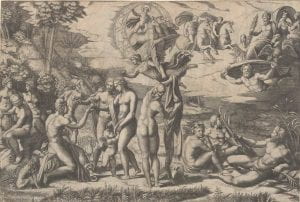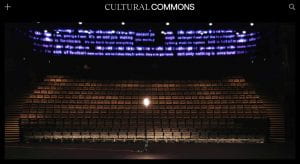“Mr. Shuter, Mr Quick, and Mrs Green in the characters of Hardcastle, Tony Lumpkin, and Mrs. Hardcastle”, a mezzotint by Robert Laurie

This charming mezzotint (1776) by Robert Laurie is an engraving of Thomas Parkinson’s painting of the same year, Mr. Shuter, with Mr. Quick, and Mrs. Green, in a scene from She Stoops to Conquer. Parkinson was a known theatrical painter, and Laurie the owner of a successful engravings and publishing business located in Fleet Street, London, an area still associated with the British printing trade. She Stoops to Conquer (1773) is a five-part comedy by Oliver Goldsmith. The scene depicted in Laurie’s mezzotint takes place in the first scene of Act V. After a series of misunderstandings and mistaken identities, the play rollicks towards its conclusion with the union of two happy couples. But, not before the larrikin son Tony Lumpkin has tricked his mother Mrs. Hardcastle into believing she is lost in the countryside, and her husband, Mr. Hardcastle, is in fact a brigand out to rob and kill her.


